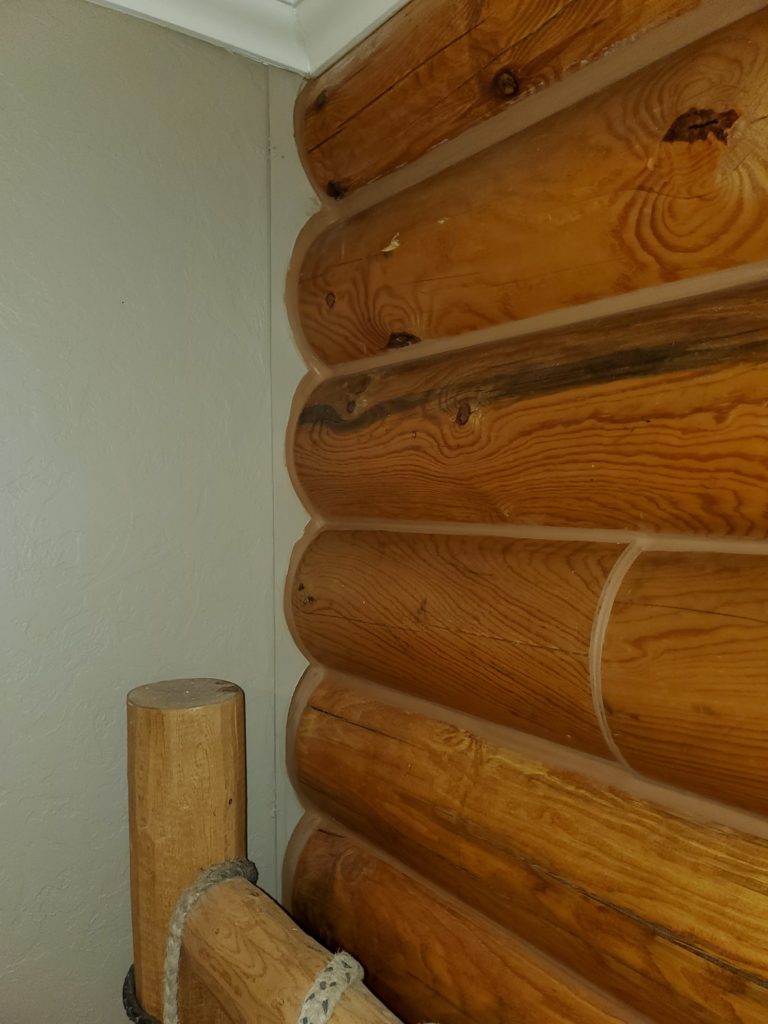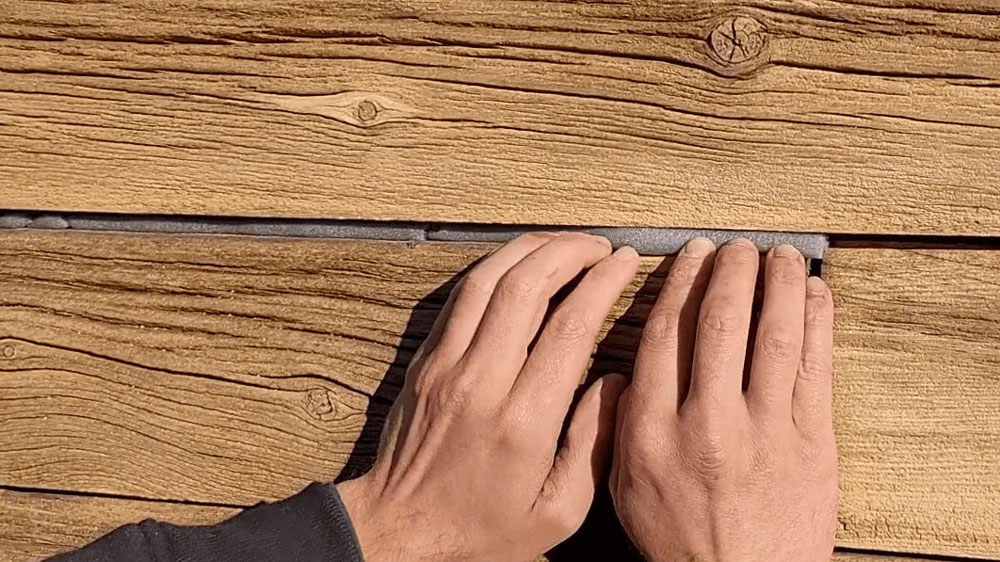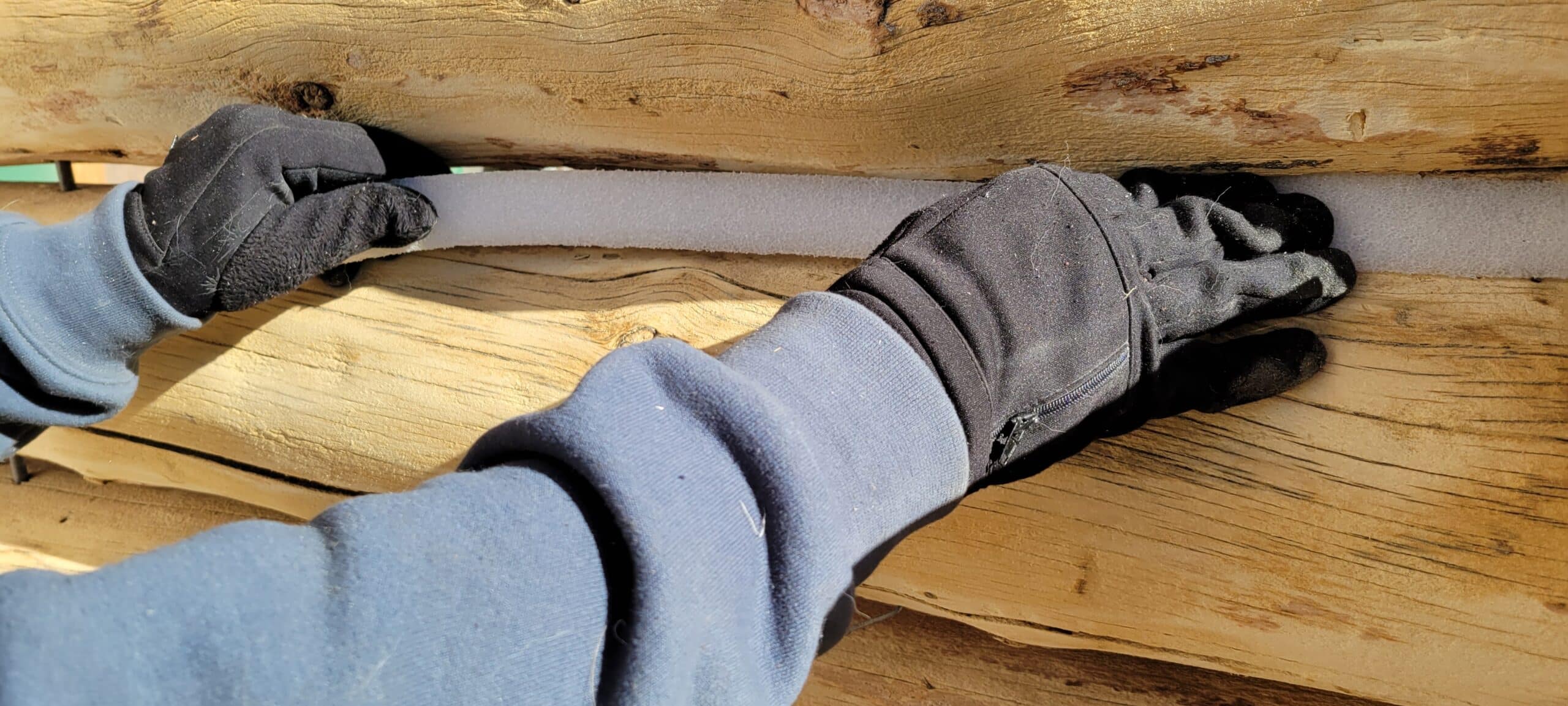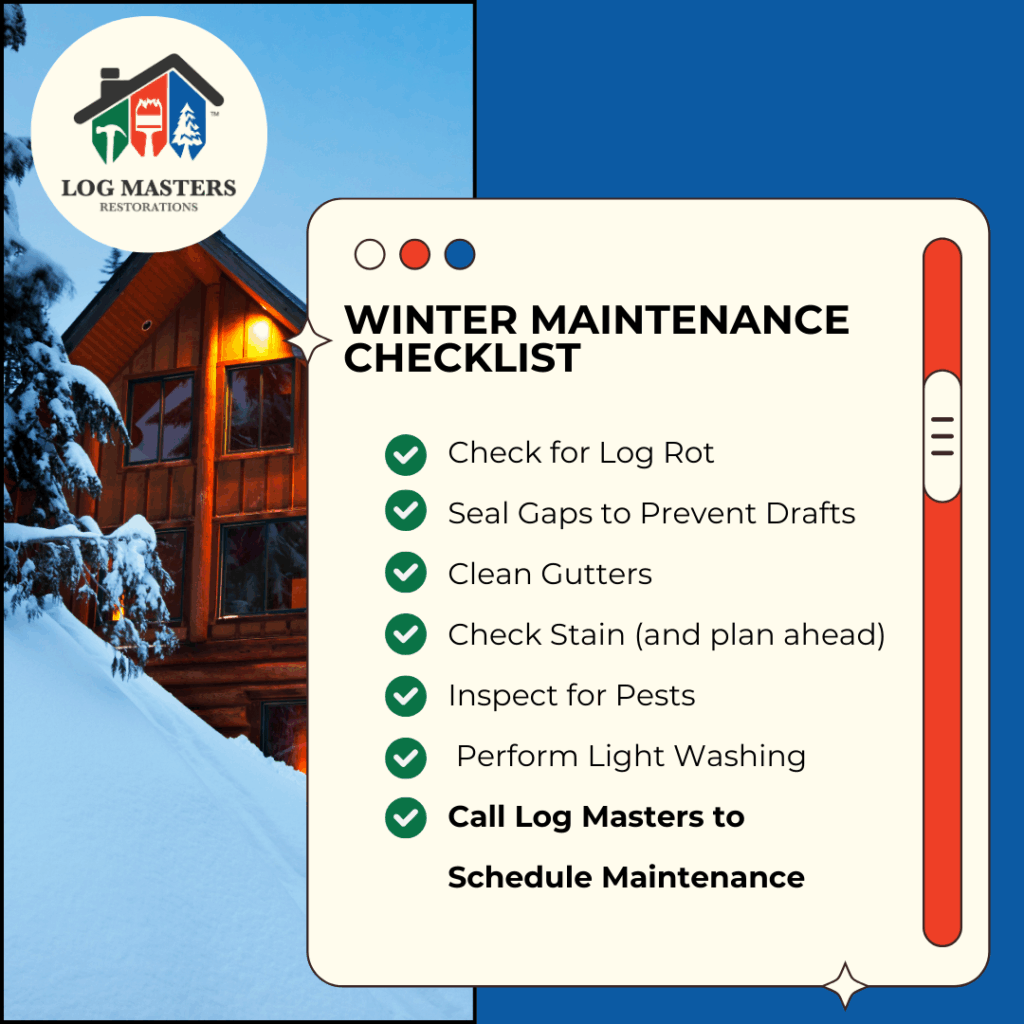
If you own a log home, you have log gaps. These spaces or separations form between the logs of a log home over time. These gaps can occur for several reasons, including natural settling, wood shrinkage, temperature and humidity fluctuations, or improper construction techniques.
There are different kinds of log gaps and ways to fill them. Leaving gaps unfilled or filling them incorrectly can lead to a variety of issues, and no one wants that!
At Log Masters, we recommend regular inspections and maintenance to ensure a tight, energy-efficient, and well-protected log home. However, if you notice gaps in the logs of your home, this comprehensive guide will explain everything you need to do to fill these gaps before staining so you can properly maintain your cabin.
What are Log Gaps?
Log gaps are spaces or separations that can form between the logs of a log home over time. These gaps can occur for several reasons, including natural settling, wood shrinkage, temperature and humidity fluctuations, or improper construction techniques. If left unaddressed, log gaps can lead to various issues such as:
- Energy inefficiency: Air leaks through gaps, causing drafts and higher heating or cooling costs.
- Moisture intrusion: Gaps allow water to seep in, leading to wood rot, mold growth, and structural damage.
- Pest infestations: Small openings can become entry points for insects and rodents.
- Aesthetic concerns: Visible gaps can diminish the visual appeal of the log structure.
To prevent and address log gaps, homeowners can use materials like chinking (a flexible, textured sealant), caulking, or backer rods to fill and seal the spaces. Regular inspections and maintenance are key to ensuring a tight, energy-efficient, and well-protected log home.
Types of Log Gaps
Each cabin log is unique, and depending on how it is built, log gaps can vary in size and shape. Log home professionals like Log Masters label log gaps as one of three types: large, small, and everything in between. Synthetic log home caulking products and backer rods can quickly fix small gaps. However, significant gaps take a little more time and extra work than smaller ones.
Small Gaps
Small gaps often look paper-thin and measure less than one inch wide or deep. Examples include log joints, door and window frames, and checks and cracks. Caulking alone is typically sufficient for these gaps. However, some professionals prefer to use backer rods for added protection and a more uniform seal.

Large Gaps
Large gaps measure over one inch in width or depth. These larger log gaps often require additional support before applying chinking or caulking. This support typically comes in the form of a backer rod or grip strip, which helps fill the void and provides a base for the sealant.

Everything In Between
Gaps between large and small require a case-by-case approach, balancing the need for structural support and aesthetic appeal. In some cases, small gaps that only require caulking can be made to look larger to achieve a more traditional or visually appealing log home style.
How to Fill in Log Gaps
Step 1: Clean the Area
Ensure the gap is free from rot debris and any other foreign objects.
Step 2: Insert Backing
Determine if you will insert Backer Rods for small gaps or Grip Strips for large gaps and everything in between.
Step 3: Apply Synthetic Caulking or Chinking
Smooth it out with a moistened putty knife for a seamless finish.
Step 4: Clean Up
With a damp wash cloth, remove any excess before it cures.
Step 5: Let It Cure
Allow the material to dry completely before staining per recommended dwell time.
Other Gaps to Fill
The information above primarily applies to filling gaps between logs on the exterior of your home. However, there are instances where your interior log joinery may need to be filled. The following video shows you precession caulking methods that can be used for other locations around your log home, including the cabin’s interior.
Need Help with Log Gaps? Call a Log Master Today!
Regular maintenance schedules are essential for log homes where weather and insects pose significant risks. Using proper caulking and chinking applications and by staying proactive, you log home sealant will rarely need full replacement.
Whether restoring or maintaining a treasured retreat, Log Masters Restorations is here to help. Explore our blogs for more tips and insights, and contact us today for a free estimate.
We have more homes to share, such as a cabin transformation in Saguache, Colorado, Defiance, Missouri, and Pacific, Missouri.
Frequently Asked Questions About Log Gaps
Should I stain before installing backer rod or grip strip?
Some will say either, but ideally you should stain before installing backer rod or grip strip. Here’s why:
- Complete Coverage: Staining before installing the backer rod or grip strip ensures that the stain penetrates all exposed wood surfaces, including the edges of gaps. This protects the wood beneath and around the backer material from weathering and UV damage.
- Avoid Stain Contamination: If you stain after installing backer rod or grip strip, the stain may soak into or adhere to the backer material, compromising the sealant’s bond or appearance.
- Easier Cleanup: Staining first prevents accidental smearing of stain onto the sealant or backer rod, reducing cleanup and ensuring a neat finish.
- Sealant Adhesion: Proper sealant application relies on a clean surface. Staining after installing backer rod may create a barrier or residue that could hinder the sealant’s adhesion.
By following this sequence, you’ll achieve better protection, durability, and aesthetics for your log home.
Can I stain directly after filling gaps?
No, allow the caulking or chinking to cure completely first.
What materials should I avoid?
Avoid non-stainable fillers or low-quality products not intended for log homes.
Do I have to stain before or after caulking?
You can do either as most log home stains and caulking bound well together despite order of application, but always check the product directions.
Explore More Log Home Maintenance Tips
Filling gaps in your log home is just one part of keeping it in great condition. For more expert advice, check out our blog articles:
- 3 Essential Tips for Log Home Maintenance
- How to Save Your Log Home’s Appearance
- Log Cabin Chinking: Why It’s Essential
- Log Cabin Caulking: Enhancing Protection and Longevity
We’re here to help you maintain and restore your log home with professional services and practical advice. Ready to get started? Contact us today for a free consultation!
The post How Do You Fill Gaps in Wood Before Staining? A Complete Guide appeared first on Log Home Restoration, Maintenance & Additions | Log Masters.
source https://logmastersrestorations.com/blog/how-do-you-fill-gaps-in-wood-before-staining-a-complete-guide/

No comments:
Post a Comment